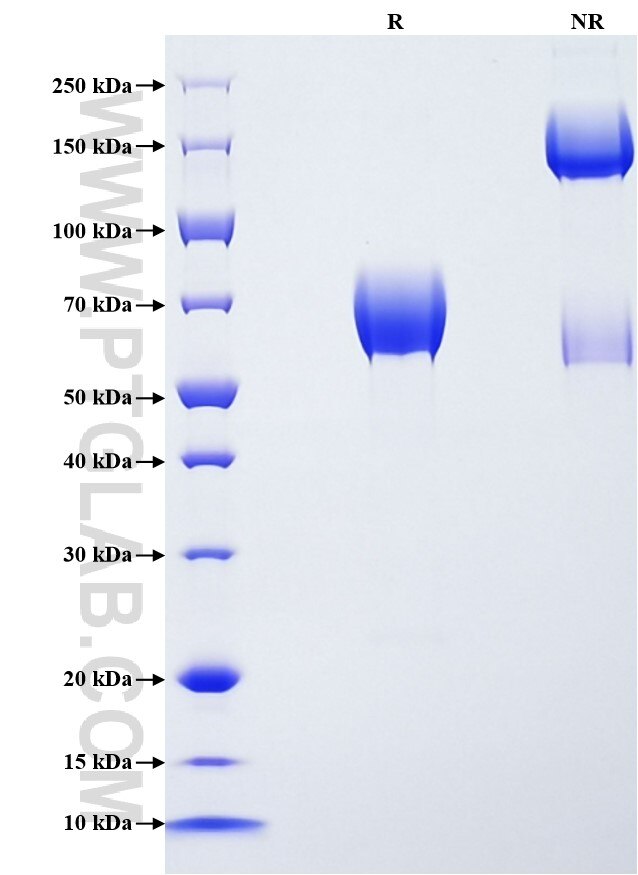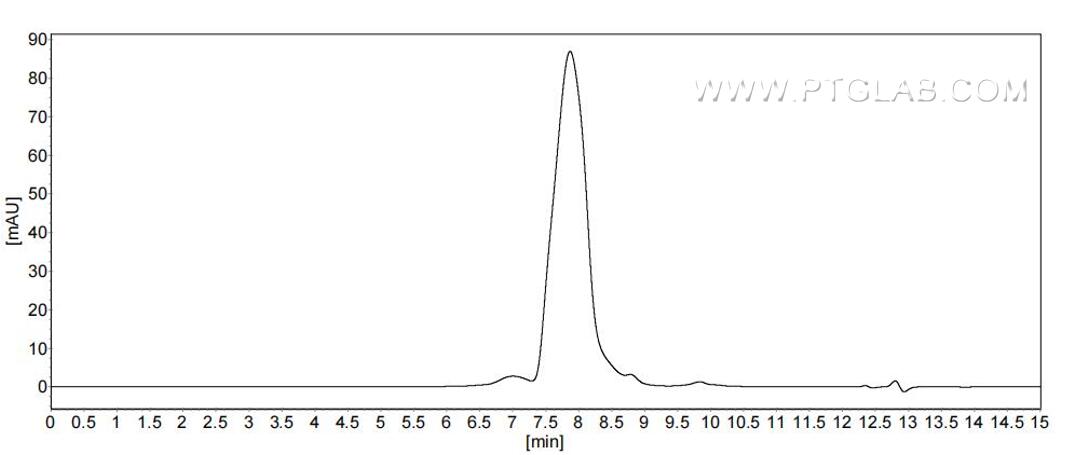Recombinant Human IL-10RB protein (rFc Tag) (HPLC verified)
Species
Human
Purity
>90 %, SDS-PAGE
>90 %, SEC-HPLC
Tag
rFc Tag
Activity
not tested
Cat no : Eg3446
Validation Data Gallery
Product Information
| Purity | >90 %, SDS-PAGE >90 %, SEC-HPLC |
| Endotoxin | <0.1 EU/μg protein, LAL method |
| Activity |
Not tested |
| Expression | HEK293-derived Human IL-10RB protein Met20-Ser220 (Accession# Q08334) with a rabbit IgG Fc tag at the C-terminus. |
| GeneID | 3588 |
| Accession | Q08334 |
| PredictedSize | 49.8 kDa |
| SDS-PAGE | 60-80 kDa, reducing (R) conditions |
| Formulation | Lyophilized from 0.22 μm filtered solution in PBS, pH 7.4. Normally 5% trehalose and 5% mannitol are added as protectants before lyophilization. |
| Reconstitution | Briefly centrifuge the tube before opening. Reconstitute at 0.1-0.5 mg/mL in sterile water. |
| Storage Conditions |
It is recommended that the protein be aliquoted for optimal storage. Avoid repeated freeze-thaw cycles.
|
| Shipping | The product is shipped at ambient temperature. Upon receipt, store it immediately at the recommended temperature. |
Background
Interleukin-10 (IL-10) is an anti-inflammatory cytokine that plays a critical role in maintaining immune system balance. IL-10 signals through a receptor complex consisting of two molecules of the IL-10R alpha-chain (IL-10RA) and two molecules of the accessory IL-10R beta-chain (IL-10RB). IL-10RA and IL-10RB are members of the type II cytokine receptor family. IL-10RB, also known as IL-10R2 or CDw210b, is the signaling subunit of the IL-10R complex and is constitutively expressed in a variety of cell types. Binding of IL-10 to the IL-10R complex leads to JAK1- and TYK2-mediated phosphorylation of STAT3. IL-10RB is also shared by several other cytokines, including IL22, IL-26, IFN-γ, IL-28A/B and IL29.
References:
1.Glocker EO, et al. (2011). Ann N Y Acad Sci. 1246:102-7. 2.Shouval DS, et al. (2014). Adv Immunol. 122:177-210. 3.Moore KW, et al. (2001). Annu Rev Immunol. 19:683-765. 4.Donnelly RP, et al. (1999). J Interferon Cytokine Res. 19(6):563-73. 5. Glocker EO, et al. (2011). Ann N Y Acad Sci. 1246:102-7.


